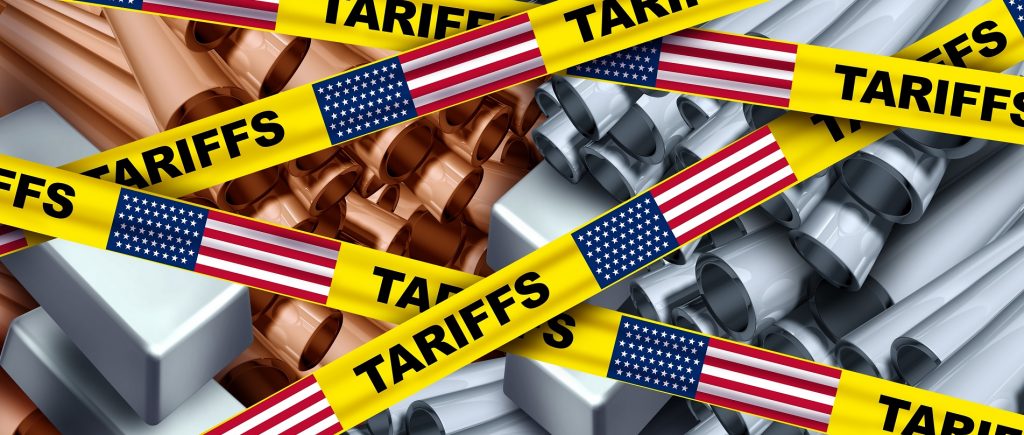As the July 9, 2025, deadline for President Donald Trump’s “reciprocal” tariffs rapidly approaches, the global trade landscape is buzzing with speculation. Will Trump extend the deadline, and which nations are on the verge of striking framework agreements to avoid significant tariff hikes? Investors and traders are closely monitoring developments, particularly given the recent market disruptions and ongoing legal challenges.
Understanding Trump’s Tariff Policy and the July 9 Deadline
In April 2025, President Trump initiated a widespread “reciprocal” tariff policy, imposing a 10% baseline tariff on nearly all imports and higher, country-specific tariffs based on bilateral trade deficits. These tariffs, enacted under the International Emergency Economic Powers Act (IEEPA), caused immediate market volatility, leading Trump to announce a 90-day pause, setting the current July 9 deadline for negotiating new bilateral trade agreements.
Factors Influencing a Potential Postponement
While Trump has publicly stated he doesn’t plan to extend the July 9 deadline, he has left room for flexibility. Several factors suggest that selective postponements are possible, particularly for countries demonstrating progress in negotiations:
Past Precedent: In May 2025, Trump granted a postponement to the European Union until July 9, responding to a request from Ursula von der Leyen for more time to reach an agreement. This indicates a willingness to extend deadlines when good-faith negotiations are underway.
Economic Impact: The initial imposition of tariffs in April 2025 led to significant market disruptions and billions of dollars in losses for U.S. importers. The administration may be wary of triggering another wave of economic uncertainty by strictly adhering to the deadline for all partners.
Legal Challenges: The legality of Trump’s use of the IEEPA for these broad tariffs has been challenged in court. A U.S. trade court ruled in May 2025 that Trump exceeded his authority, though an appeals court has temporarily stayed that ruling pending an appeal hearing on July 31, 2025. The outcome of this appeal could significantly impact the administration’s tariff authority.
Countries Closest to Framework Agreements
Several nations and blocs have been actively negotiating with the U.S. to secure agreements and avoid higher tariffs:
European Union: Having already secured a postponement, the EU is at the forefront of negotiations. They received a new U.S. trade proposal in late June and are continuing discussions, aiming for an agreement that could involve a 10% tariff with limited European retaliation. The substantial trade volume between the two entities ($1.7 trillion in 2023) makes an agreement a high priority.
United Kingdom: A limited bilateral trade agreement has been announced, maintaining 10% tariffs on British exports with some expanded access for agricultural products and reduced U.S. tariffs on British auto exports. While this marks significant progress, certain details, especially concerning steel, remain unresolved, suggesting ongoing negotiations.
India: Trump has expressed optimism about reaching a “very big” deal with India, indicating India’s readiness to lower trade barriers for U.S. companies. India is actively negotiating to avoid potential 26% tariffs, though disagreements, particularly on agricultural and dairy products, persist.
Canada and Mexico: Both countries benefit from temporary exemptions from higher tariffs on USMCA-compliant goods. While some tariffs on non-compliant vehicles were imposed in March 2025, their existing trade framework with the U.S. puts them in a relatively strong position. Canada recently resumed talks after agreeing to remove its digital services tax.
China: A 90-day trade truce was reached, reducing U.S. tariffs on Chinese imports to 30% and Chinese tariffs on U.S. imports to 10%, alongside China resuming rare earth exports. However, tensions remain, exemplified by Trump raising tariffs on de minimis Chinese shipments to 54%. The truce is temporary, and a comprehensive framework agreement by July 9 seems less likely given the ongoing complexities.
Vietnam: Trump announced a trade deal with Vietnam in early July, where Vietnamese exports to the U.S. will face a 20% tariff, with a 40% tariff on transshipped goods, in exchange for Vietnam opening its market to U.S. products with zero tariffs.
Taiwan: President Lai Ching-te has taken steps to reduce trade barriers and increase U.S. imports, indicating a willingness to avoid retaliatory tariffs.
Other Nations (Cambodia, Indonesia, Malaysia, Philippines, South Korea, Switzerland, Thailand): Many of these countries have active ongoing negotiations, some with detailed proposals or specific requests for tariff caps, hoping to finalize agreements or secure extensions before the deadline.
Japan: Japan has expressed reluctance in negotiations, and Trump has voiced doubts about reaching an agreement by the deadline. It appears less likely to secure a framework agreement in the immediate term.
Looking Ahead
Despite Trump’s firm public stance, the combination of past postponements, potential economic repercussions, and ongoing legal challenges suggests that selective extensions for cooperating countries remain a distinct possibility. While some countries like the EU, UK, India, Canada, Mexico, Vietnam, and Taiwan have made tangible progress towards framework agreements, others like Japan and several Asian nations appear less close. The appeal hearing on July 31, 2025, regarding the legality of Trump’s IEEPA-based tariffs, could also introduce a new dynamic, potentially influencing the future course of these trade policies.
Will these ongoing negotiations lead to a more stable global trade environment, or will the looming deadline see a surge in tariffs for nations unable to secure agreements?

 Noor Trends News, Technical Analysis, Educational Tools and Recommendations
Noor Trends News, Technical Analysis, Educational Tools and Recommendations




